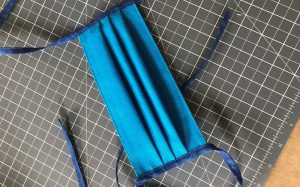Wood River Valley COVID-19
From Dr. Archie
April 3, 2020B L A I N E I D A H O
From – Tom Archie MD, Ketchum, Idaho
Summary
COVID19 Transmission Edition
This is a single-issue edition of the InnerHealthMD Pulse. It is dedicated to the topic of how early and how long the SARS-CoV-2 virus is spread from infected individuals to others who have not yet been exposed.
I explain my rationale for….
a) early self-quarantine if suspicious of symptoms
b) early self-quarantine if someone in your house has suspicious symptoms
c) how long to remain in self-quarantine, and
d) why I disagree with CDC recommendations for duratation of self-quarantine and with hospital systems using CDC guidelines to recommend ending quarantine for known cases (or for symptom-probable cases).
There are links to original journal articles, all reported in March 2020.
I encourage individuals, physicians, and especially employers to review this information when establishing return-to-work (or return-to-grocery-shopping) timelines.
There are links to original journal articles, all reported in March 2020:
Surface Contamination &
Aerosolization
In a detailed study of 13 COVID19 patients at Nebraska Medical Center’s quarantine unit, most of whom had mild disease, 40 surfaces were repeatedly checked for the SARS-CoV-2 virus
The following were positive for the coronavirus:
-76.5% of all personal items 81.3% of exercise equipment, medical equipment (spirometer, pulse oximeter, nasal cannula), personal computers, iPads and reading glasses (mean of 0.217 copies/mcL)
-83.3% of cell phones (mean of 0.172 copies/mcL)
-64.7% of TV remote controls (mean of 0.230 copies/mcL)
-81% of samples from toilets (mean 0.252 copies/mcL)
-80.4% of all room surface samples
-75% of bedside tables and bed rails
-81.8% of the window ledges (mean concentration 0.219 copies/mcL)
-100% of all under-the-bed floor samples (mean of 0.447 copies/mcL)
-80% of ventilation grate samples (mean of and 0.819 copies/mcL)
-63.2% of in-room air samples (2.86 copies/L of air) – including well beyond 6 feet away
-66.7% of hallway air samples – outside-patient-confined rooms (transported by medical staff)
Virus found in GREATER amounts where drifting by air than on items touched
Virus was found on surfaces obviously not touched by patients (under the bed, window ledges) following air flow and eddies. Airflow modeling results strongly suggest that “virus expelled from infected individuals, including from those who are only mildly ill, may be transported by aerosol processes in their local environment, potentially even in the absence of cough or aerosol generating procedures.”
BOTTOM LINE If you have a new illness, please stay home until it is gone and stays gone for as long as 3-4 weeks after symptoms started. Help reduce spread!
In a study of 23 COVID19-hospitalized patients in Hong Kong,
Saliva viral load highest in the week 1 and declined with time
Longest viral shedding 25 days after symptom onset.
-50% of severe case shed virus in saliva >20 days
-23% of mild cases shed virus in saliva >20 days. C
-38% of severe cases shed virus in stool > 20 days
-14% of mild cases shed virus in stool > 20 days
There was no virus found in urine samples.
In a study of 9 COVID19-hospitalized patients in Germany, which included interesting observations on the ability to grow virus in culture after obtaining it from patients at different stages of disease
Virus found in throat, lung and stool but never in blood or urine.
Patients initially had mild symptoms of a common cold.
Nasal swab PCR tests positive in all cases on Day 1-5 of symptoms.
Antibodies IgM & IgG first detected on Day 6-12 of symptoms.
Longest viral shedding 22 days from onset
Slow, steady decline in the amount of virus in samples over 22 days
Efforts to grow virus from patient samples in the lab were more successful in the first week of symptoms.
Despite high viral loads found on nasal sampling in later weeks, virus was not able to be grown from samples taken starting on Day 9 after symptom onset.
This suggests less infectiousness after 9 days from onset of symptoms
We each have a one chance to make a good decision about how to avoid spreading SARS-CoV-2, the virus causing the COVID19 pandemic, further beyond ourselves and our homes.
We have never had to think this way about a disease before on such a large scale. Every time the coronavirus fails to make it out of our bodies and into someone else’s body can mean hundreds of lives saved on down the line. A quicker return to strong economic vitality – something that is incredibly important for everyone’s wellbeing – requires everyone’s short term effort to stop the spread of COVID19.
CDC guidelines regarding ending self-quarantine should extend longer than currently advised. While they are a little more convenient than the medical literature suggests is wise, please don’t use them as an excuse to ignore the evidence.
– I recommend masks, as available, when near non-household people.
– I recommend COVID19 symptom self-quarantine for up to 21-25 days post-symptom-onset-date (out to 30-37 days in the most severe cases).
– If not sure about early symptoms, then self-quarantine and reassess in a few days. If you are ill, you are MOST contagious BEFORE very sick.
Be well, and protect others.

